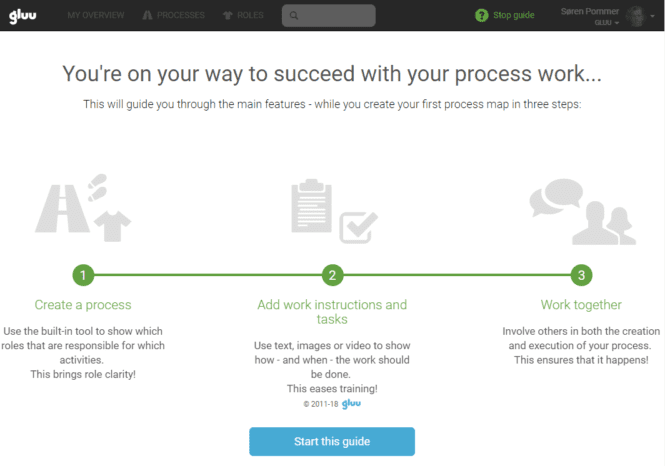GUIDE TO PROCESS SUCCESS (2/8)
Prepare a process collaboration tool
Before you start, you need to select a good process collaboration tool. This way it can support your process improvement plan from start to finish. Moreover, it will also save you time and ensure that you don’t have to worry about version control or having to redraw your process maps when you’re ready to share with your organisation.
Process improvement steps
- Succeed with your process improvement plan
- Prepare a process collaboration tool
- Make a process hierarchy and a process blueprint
- Appoint, nominate and educate process owners
- Present process mapping to all colleagues
- Make process flow charts
- Stabilise your processes
- Maintain process improvement focus
STEP 2.1
Choose which process collaboration tool to use
There is a multitude of different process improvement software available. Luckily, we’ve provided a handy overview of the top 5 process documentation tools. While of course we also recommend our own ‘process success platform’ Gluu that makes it easy and inexpensive to start the right way.
This chapter in our guide is mostly focused on starting with Gluu. Gluu is designed to support the entire journey right from creating an initial process hierarchy to having each process improved continuously. To start you need only to prepare an account with some initial users.
STEP 2.2
Set up your account
More information
First, create an account in your organisation’s name. Inside Gluu you can click the “Start Guide” in the top menu at any time to return back to that tutorial.

Separate accounts, or all in one?
If you work for a large company then you should consider creating a joint account or an account for each division or subsidiary. Gluu allows easy switching between multiple accounts. See how.
Tip!
A manufacturing company creates an account for their group processes such as Purchasing, Logistics, Finance, HR and Marketing. This is accessible by group employees and the management team at each factory.
They also prepare accounts for each factory. Factory management and key employees can then create and manage their local processes here.
Thus, some users have access to multiple accounts, while others only have access to one. The same principle applies to the processes in the individual accounts.
Checklist
- Process documentation tool selected.
- Decision made to use a single account for your organisation, or create multiple separate accounts.
- An account has been created.
- The first process has been created and initial users invited through the guide.
On to next step!
That’s it. Now that you’ve got your account(s) ready and is set up with tooling it’s time to take the next step in your process improvement effort and make a process hierarchy and process blueprint. A process hierarchy is an overview of your organisation’s processes and makes it a lot easier to see how your operators interact with them from an end-to-end standpoint. It sets your scope and the boundaries for your process improvement plan.
